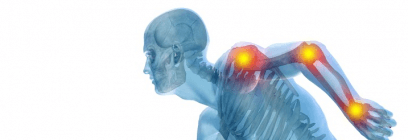Learning Frequent Sports Ailments as well as Effective Recovery Strategies aimed at Sports Players
Learning Frequent Sports Ailments as well as Effective Recovery Strategies aimed at Sports Players
Blog Article
Athletic injuries are common among sportspeople of every ages and proficiency levels. These traumas can happen in multiple forms, including sprains, strains, fractures, and tendon inflammation. Comprehending the types of traumas that can occur during athletic activities is essential for not only prevention and care. Sprains, for example, entail the stretching or tearing of ligaments, which connect bones at a articulation. Muscle injuries, on the other hand, affect muscle tissues or tendons, which connect muscles to skeletal structures. Identifying these injuries early can assist sportspeople obtain suitable treatment and return to their activity more rapidly.
One of the most frequently observed injuries in athletics is the ankle sprain. This injury often happens when an athlete touches down awkwardly or twists their foot during a match. Symptoms of an foot ligament injury include pain, inflammation, and trouble walking. Prompt treatment typically includes the R.I.C.E. method, which stands for Recovery, Ice, Compression, and Lifting. This method aids reduce swelling and pain. In more severe situations, physical treatment may be required to regain power and flexibility to the foot before going back to athletics.
Another frequent injury is a muscular strain, which can occur in any athletic activity that requires quick actions or heavy lifting. Athletes may suffer a muscle injury when they stretch a muscular tissue too far or when they exert too much effort. Symptoms include acute discomfort, inflammation, and muscle contractions. Rehabilitation for physical therapy for athletes muscular injuries often entails gentle flexibility exercises and strengthening exercises. Slowly raising activity levels is vital to prevent recurrence. Sportspeople should work closely with a physical specialist to develop a safe and efficient recovery plan.
Tendonitis is another injury that can impact athletes, particularly those who engage in repetitive motions, such as joggers or swimmers. This issue occurs when a tendon structure, which links muscular tissue to skeletal structure, becomes swollen. Frequent locations involved by tendonitis include the elbow, upper arm, and leg. Symptoms often include discomfort and rigidity, especially during activity. Treatment for tendonitis usually includes recovery, ice, and pain-relief drugs. In certain cases, rehabilitative therapy may be recommended to improve mobility and power in the injured area.
Preventing athletic traumas is just as important as treating them. Athletes can reduce their chance of trauma by heating up properly before events, using the appropriate gear, and maintaining good physical shape. Power training and flexibility workouts can help prepare the body for the requirements of athletics. Additionally, sportspeople should listen to their bodies and allow rest when needed. By understanding frequent athletic injuries and implementing effective recovery strategies, sportspeople can remain healthy and participate in their beloved sports for years to come.